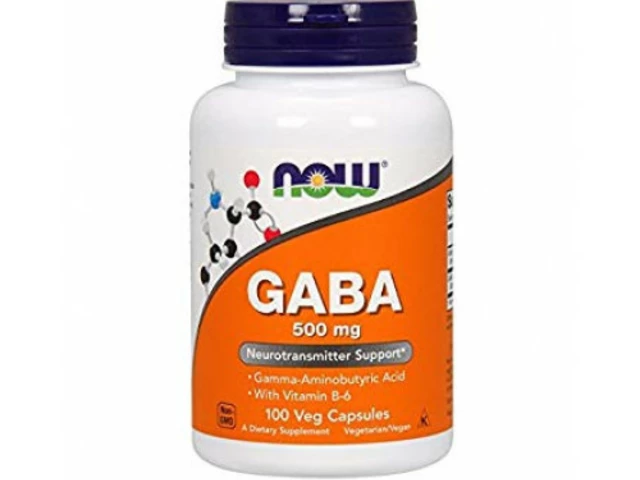Understanding Hemophilia and the Need for Effective Treatments
Hemophilia is a rare genetic disorder that affects the blood's ability to clot properly. This can lead to excessive bleeding and bruising, causing severe pain, joint damage, and even life-threatening situations. As someone who has witnessed the impact of this condition on patients and their families, I understand the need for effective treatments to manage and reduce the symptoms of hemophilia. In this article, we will explore the potential benefits of tranexamic acid for patients with hemophilia and discuss how this medication may contribute to improved quality of life for those affected by this disorder.
What is Tranexamic Acid and How Does It Work?
Tranexamic acid is a medication that belongs to a class of drugs known as antifibrinolytics. It works by preventing the breakdown of blood clots, which helps to control bleeding in patients with hemophilia. This is particularly important for those who experience frequent bleeding episodes due to their condition. Tranexamic acid is available in various forms, including oral tablets, injectable solutions, and topical applications. In the following sections, we will delve deeper into the potential benefits of this medication for hemophilia patients.
Reducing the Frequency and Severity of Bleeding Episodes
One of the most significant challenges faced by patients with hemophilia is the frequency and severity of bleeding episodes. These episodes can lead to long-term complications, such as joint damage and disability. Tranexamic acid has been shown to reduce the incidence of bleeding episodes in hemophilia patients by stabilizing blood clots and preventing their premature breakdown. This can help patients avoid the need for frequent hospital visits, blood transfusions, and other invasive procedures, ultimately improving their quality of life.
Preventing Excessive Bleeding During Surgery and Dental Procedures
Patients with hemophilia often require special precautions during surgeries and dental procedures to minimize the risk of excessive bleeding. Tranexamic acid has been used successfully as an adjunct therapy during these procedures to control bleeding and reduce the need for blood products. By stabilizing blood clots and preventing their breakdown, tranexamic acid helps to ensure that patients can undergo necessary procedures with minimal complications and a faster recovery time.
Reducing Joint and Muscle Bleeding
One of the most common and debilitating symptoms of hemophilia is joint and muscle bleeding, which can lead to significant pain, swelling, and long-term damage. The use of tranexamic acid has been shown to reduce the occurrence of joint and muscle bleeding in patients with hemophilia, minimizing the risk of joint damage and disability. This can have a profound impact on a patient's ability to maintain an active and independent lifestyle, ultimately enhancing their overall well-being.
Improving Quality of Life for Patients with Hemophilia
Living with hemophilia can be challenging and emotionally taxing for both patients and their families. Frequent bleeding episodes, hospital visits, and long-term complications can take a toll on a patient's mental and physical health. By reducing the frequency and severity of bleeding episodes, tranexamic acid has the potential to significantly improve the quality of life for patients with hemophilia. This includes allowing them to participate in activities they enjoy, reducing their reliance on medical interventions, and lessening the emotional burden associated with living with a chronic condition.
Considerations and Potential Side Effects of Tranexamic Acid
As with any medication, it is essential to consider the potential side effects and risks associated with the use of tranexamic acid. Some common side effects may include nausea, vomiting, diarrhea, and headache. More severe side effects, such as blood clots, could occur but are relatively rare. It is crucial for patients to consult with their healthcare provider before starting tranexamic acid to ensure that it is the right treatment option for their individual needs and to discuss any potential risks or interactions with other medications they may be taking.
Conclusion: A Promising Treatment Option for Hemophilia Patients
In conclusion, tranexamic acid offers a promising treatment option for patients with hemophilia, with the potential to reduce the frequency and severity of bleeding episodes, prevent excessive bleeding during surgeries and dental procedures, and minimize joint and muscle bleeding. By addressing these critical aspects of hemophilia management, tranexamic acid may contribute to improved quality of life for patients and their families. As always, it is essential for patients to consult with their healthcare provider to determine the most appropriate treatment plan for their unique needs and circumstances.







Sukanya Borborah
This piece reads like a marketing brochure with overused medical jargon.
bruce hain
Although the mechanism of antifibrinolytics is scientifically sound, the incremental benefit for hemophilia patients is, at best, modest. Moreover, the article glosses over the cost‑effectiveness analysis that clinicians demand. A more nuanced discussion would consider alternative hemostatic agents and personalized dosing regimens.
Stu Davies
Really feels for anyone battling those joint bleeds 😔. It’s good to see a drug that can potentially cut down hospital trips, and the tone here is hopeful 🌟. Keep the empathy front‑and‑center, and maybe sprinkle some patient stories for real impact.
Nadia Stallaert
One cannot help but wonder, in this age of hyper‑medicalization, why we continue to repackage the same old anticoagulant antagonists as revolutionary breakthroughs; the very premise of deploying tranexamic acid in hemophilia feels like a shadow of a solution masquerading beneath a veil of scientific optimism. The article, dripping with glossy optimism, sidesteps the lurking specter of iatrogenic thrombosis that haunts every clinician who dares to meddle with the fibrinolytic cascade; this omission is not merely an oversight but a deliberate blinding of the reader to the dark underbelly of pharmacologic intervention. Moreover, the emphasis on “quality of life” is wielded like a rhetorical sword, slicing through the nuanced reality that many patients already endure a litany of comorbidities, making any marginal reduction in bleed frequency a double‑edged sword. The reliance on anecdotal case series, rather than robust randomized controlled trials, smacks of desperation, and the author’s failure to address the statistical power of the cited studies raises a red flag that flutters like a moth in the night. In the grand tapestry of hemophilia care, where factor concentrates and gene therapy loom on the horizon, the insertion of tranexamic acid seems more like a stopgap, a palliative whisper versus a decisive proclamation. Yet the narrative refuses to confront the ethical quagmire of prescribing a drug that may, in rare instances, precipitate catastrophic clot formation, especially in patients with underlying prothrombotic predispositions. The article’s cheerful tone, peppered with buzzwords such as “promising” and “potential,” glosses over the weighty responsibility of shared decision‑making that should anchor any therapeutic discourse. It is as if the author has donned rose‑colored glasses, filtering out the gritty, inconvenient truths that clinicians must wrestle with daily. The omission of a thorough risk‑benefit analysis, particularly in pediatric populations where growth plates are vulnerable, is a glaring void that undermines the credibility of the piece. Additionally, the lack of discussion regarding drug interactions, especially with emerging novel therapies, leaves the practitioner navigating a foggy landscape without a compass. The rhetorical flourish that celebrates “reduced hospital visits” fails to acknowledge the socio‑economic disparities that dictate access to tranexamic acid in the first place; a subtle yet potent form of medical elitism. All the while, the article sidesteps the crucial question: who bears the cost of this “adjunct therapy,” and is the financial burden proportionate to the marginal clinical gain? In conclusion, while the promise of tranexamic acid cannot be dismissed outright, the article’s sanguine narrative is marred by selective reporting, omission of critical safety data, and a veneer of optimism that borders on the evangelical; a more balanced, data‑driven approach is indispensable.
Greg RipKid
Honestly, tranexamic acid is a solid tool in the kit, but it’s not a silver bullet. It can shave off a few bleeds and keep the doc’s schedule light, which is a win for most families. Just make sure you’re pairing it with proper factor replacement and regular check‑ups, and you’re good.
John Price Hannah
Ah, the dramatics never cease! Your labyrinthine prose paints tranexamic acid as a mythical beast, yet in the clinic it’s merely a humble sidekick. While you spin webs of conspiracy and caution, the reality is far less theatrical: a dose here, a dose there, and patients see fewer bruises. Let’s not drown the conversation in melodrama; the data, though not flawless, does show a measurable drop in joint bleeds when used correctly. So, dear wordsmith, perhaps temper your parchment with a pinch of pragmatism, lest the narrative itself becomes the most dangerous prescription.
Echo Rosales
Yet the literature still leaves room for skepticism; not every trial confirms a statistically significant benefit.